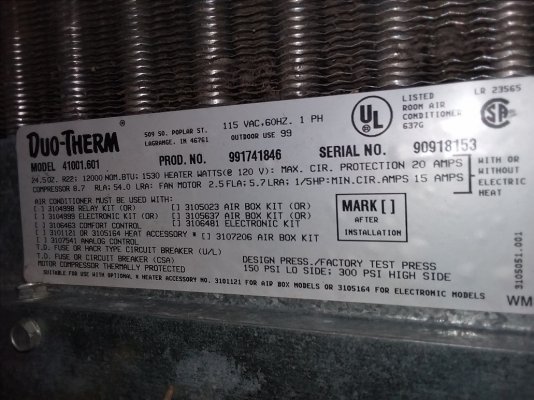NFranzen
Well-known member
I Have a Duo-Therm unit in my 2000 Dutchmen Voyager Pop up camper. When I turn the thermostat on the fan blows, but I do not get any heat when it is set to heat and I get no AC when it is set to AC. I did discover that there is no propane line that runs to this unit, so it must have electric heat which I do not fully understand. I was told the relay board might be bad. Would the relay board being bad possibly cause it to not heat or cool? I've researched the model online and found relay boards, but I don't see a way to get to the board from the outside of the camper so I am thinking I may have to pull the counter up to get to it. I have attached a screen shot of the back sticker. Any advice is appreciated. Thanks in advance.
*Edit:
This wouldn't be a unit that also needs DC to run the control board would it? I am having trouble finding a manual for this specific one, but I have a battery box with no battery in it and wire hook ups. I thought mainly it was for the lights and there is a DC option for the fridge if you go somewhere with no electric hook ups.
*Edit:
This wouldn't be a unit that also needs DC to run the control board would it? I am having trouble finding a manual for this specific one, but I have a battery box with no battery in it and wire hook ups. I thought mainly it was for the lights and there is a DC option for the fridge if you go somewhere with no electric hook ups.

